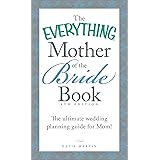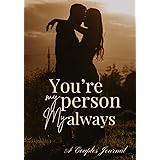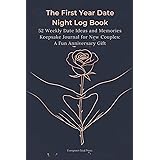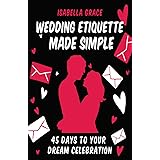Every wedding photographer knows the unique blend of anticipation and adrenaline that surges just before the wedding ceremony. It’s a sacred sequence of moments, from the first glimpse of the bride walking down the aisle to the jubilant recessional, each demanding precision, quick thinking, and a keen eye. While the video above provides an excellent step-by-step breakdown of how to **photograph a wedding ceremony**, this article delves deeper into the strategies and nuanced considerations that can elevate your **wedding photography** from good to truly unforgettable.
Mastering the Wedding Ceremony Photography Flow
The ceremony can feel like a whirlwind, yet it’s often segmented into three distinct acts: the processional, the main ceremony, and the recessional. Understanding these phases is crucial for strategic positioning and ensuring you capture every vital memory. Our aim is to provide comprehensive **wedding photographer tips** to navigate these moments.
1. Capturing the Emotion of the Processional
The processional sets the emotional tone for the entire ceremony. It’s a crescendo of anticipation and joy, starting with the arrival of family and bridal party members, culminating in the bride’s grand entrance. Knowing where to be and what to focus on is paramount for stunning **processional wedding photography**.
Initially, position yourself near the front, often slightly to the side where the bride will enter. This allows you to capture family and bridesmaids as they walk down the aisle. The speaker notes that sometimes she squats for these early shots to be less conspicuous, a valuable tip for maintaining reverence, especially in more formal settings.
The groom’s reaction to seeing his partner for the first time is a money shot. Prioritize this by shifting your focus to the groom as soon as the bride begins her walk. Use a lens that allows you to zoom in on his face, ensuring you don’t miss that raw, emotional response. As the bride approaches, shift your attention back to her and her escort, aiming for a full-length shot around a prime focal zone—a strategy that requires anticipating movement and quick adjustments.
The “handoff” from the escort to the groom is another crucial moment filled with tenderness and significance. Be ready to capture this from multiple angles, ideally with the help of a second shooter. One photographer can capture the front-facing interaction, while another covers the candid expressions from behind the couple, ensuring a complete narrative.
2. Choosing the Right Lenses for the Processional
Lens selection dramatically impacts your ability to adapt to varying ceremony conditions. The Canon 28-70mm f/2.0 is highlighted as an incredibly versatile option, allowing for both wide and zoomed shots without changing lenses, which is critical in fast-paced environments.
For those without this specific lens, a 50mm lens is a strong contender for its versatility in capturing full-body shots and adapting to movement. However, shorter aisles or darker venues, like the challenging Boston wedding scenario mentioned, often call for a 35mm lens. Its wider field of view and faster autofocus reliability make it invaluable in low-light, tight spaces. While an 85mm lens offers beautiful compression and tight portraits, its limiting field of view means you need ample space and confident movement, making it less ideal for the dynamic processional for newer photographers.
3. Capturing the Essence of the Main Ceremony
Once the processional concludes, the main ceremony begins, a period rich with intimate details and profound symbolism. Here, the focus shifts to capturing interaction, emotion, and the overall atmosphere of the event. The speaker rightly stresses the importance of securing “staple shots” early on, acknowledging that unforeseen events can disrupt the flow of even the most meticulously planned weddings.
From the back of the aisle, a 35mm or 28mm wide shot is essential to encapsulate the entire setting. This shot includes the couple, the officiant, guests, and the decor, providing a vital sense of place. From there, transition to a longer focal length, such as a 70-200mm lens, from the side. This allows for tighter, more intimate portraits of the couple’s expressions, as well as candid reactions from parents and close family members without intruding on the moment.
Emotional moments like the vows are prime opportunities for capturing genuine sentiment. If working with a second shooter, coordinate roles: one focuses on the groom’s reactions from the side, while the other captures the bride from a central position, ensuring comprehensive coverage. For the ring exchange, discreetly moving slightly further down the aisle (without becoming an obstruction) can yield beautifully close and impactful shots, emphasizing the significance of this ritual.
4. Navigating Special Ceremony Moments and Second Shooter Coordination
Many ceremonies feature unique elements, such as sand ceremonies, unity candles, special readings, or musical performances. These are crucial elements of the couple’s story and demand careful attention.
Effective coordination with a second shooter is invaluable during these times. Assign specific roles based on proximity and lens advantage. For instance, if a reader is on the right side of the aisle, the photographer on that side should take the lead. This prevents unnecessary movement and ensures smooth coverage. In a solo shooting scenario, planning is paramount; you must anticipate these moments and position yourself to capture them efficiently without compromising other key shots.
5. The Dramatic Kiss and Exhilarating Recessional
The first kiss as a married couple and the subsequent recessional are moments of pure elation, demanding a shift in photographic strategy. For the kiss, getting physically closer with a versatile lens like the 28-70mm at 70mm or even a 50mm can produce stunning, intimate horizontal shots. If distractions abound, a vertical frame can help isolate the couple. This is a moment where moving up the aisle slightly is generally acceptable, as the formal part of the ceremony is concluding and celebratory energy is building.
The recessional, however, is a high-energy challenge. The couple often moves quickly, and you’ll be walking backward, potentially navigating uneven terrain or excited guests. A wider, fast-focusing lens (like the 28-70mm or a 35mm) is crucial here. It allows for flexibility in framing as they sprint down the aisle, capturing their joyful exit, guest reactions, and even the classic “kiss prompt” moment the speaker suggests. The stress of managing motion blur, changing light conditions (especially between an indoor chapel and outdoor light), and rapid camera setting adjustments while walking backward cannot be overstated.
For solo photographers, the recessional presents a difficult choice: follow the couple to capture their immediate post-ceremony candids (hugs, celebrations with family) or stay behind to photograph the bridal party and guests exiting. Often, the candid, emotional interactions with family immediately after the ceremony are more highly valued by couples than every single guest’s exit. Having a second shooter clearly alleviates this dilemma, with one following the couple and the other capturing the remaining departures.
6. Essential Pre-Ceremony Planning for Success
While the video focuses on execution, successful **wedding ceremony photography** begins long before the first guest arrives. A thorough understanding of the venue, light, and timeline is paramount. Schedule a walkthrough with the couple or wedding planner to scout angles, identify potential obstructions, and discuss any unique ceremony elements.
Communicating with the officiant is also critical. Discuss your presence and movement during the ceremony to ensure you remain discreet and respectful. Many officiants have specific rules about photography during certain parts of the service, and respecting these boundaries builds trust and ensures a smoother experience for everyone. Always have backup gear ready, including spare batteries, memory cards, and even an extra camera body, to mitigate the impact of any technical mishaps.
Capturing a **wedding ceremony** is a profound responsibility, demanding a blend of technical skill, emotional intelligence, and swift adaptability. By meticulously planning, understanding the flow, and being prepared for the unexpected, you can deliver a collection of images that truly tell the story of this pivotal moment in a couple’s journey. These **wedding photographer tips** provide a solid foundation for any professional looking to excel in **how to photograph a wedding ceremony**.











